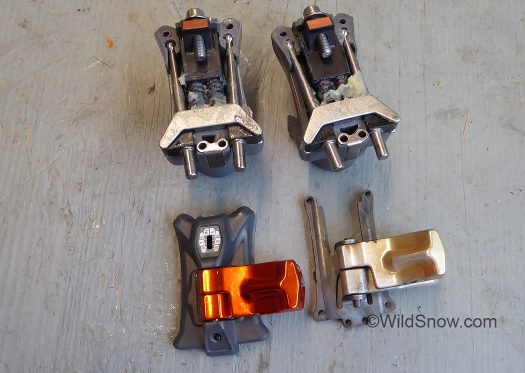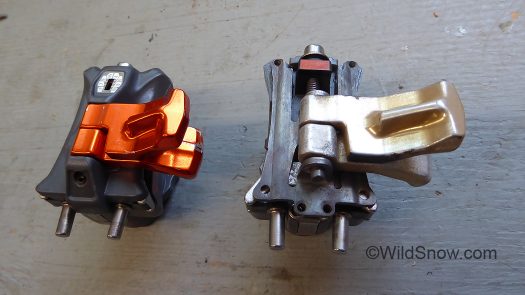I got curious. What does the co-molded ION binding heel top (2016-2017) look like without plastic covering up the steel, and in comparison to the original solid aluminum piece?
(Apologies if the article title distracted you from making cat videos. Sometimes clickbait is just fun.)
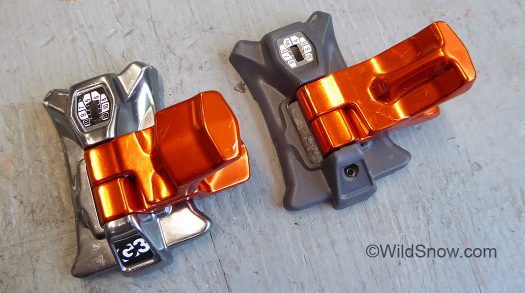
Tops removed from heel units, earlier solid aluminum to left, co-molded steel-plastic to right. Interestingly, the co-molded top weighs 68 grams while the solid alu weighs 66. No weight savings, so the change must have been done to improve things in the areas of durability or manufacturing cost. The aluminum piece is truly beautiful, but clearly involves processes tougher than injection molding.
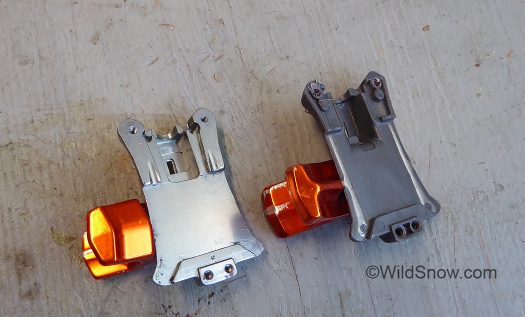
Underside, alu version to left. You can see hints of the steel frame inside co-molded version to right. For me, a hint like that is equivalent to sneaking peeks when I was in highschool, and I’m not talking about ski bindings. Resistance was futile then — and remains so.
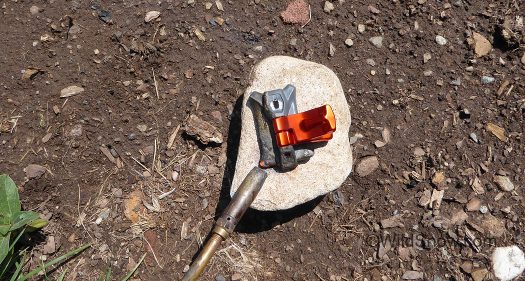
Sophisticated forensic tooling. DIN-ISO binding plastic liquefaction device is certified by WUV to conformity with ISO standard 486525$$pp. Note, WUF is WildSnow Überwachungsverein, and is located in a secret laboratory, beneath 300 feet of saltwater in a Norwegian fiord.
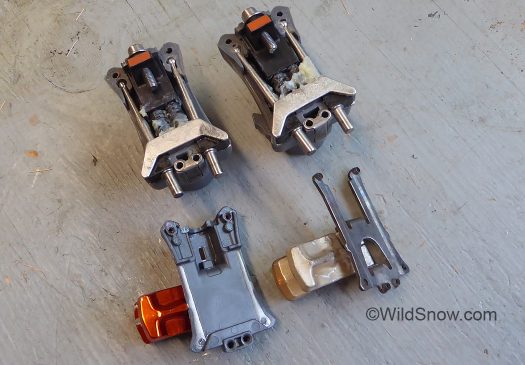
Ok, to the left we have the original, to right the steel frame separated from the plastic. The steel frame is robust, but I can’t help but prefer the aluminum. Note the nipples containing threads for the 4 attachment screws.
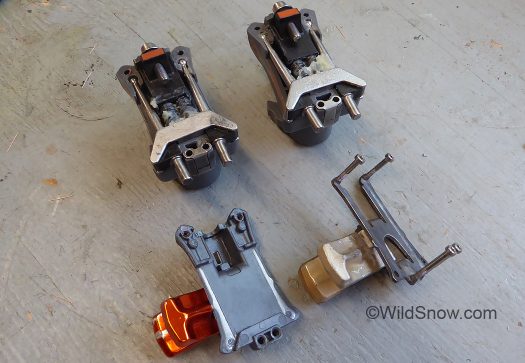
How it holds the screws. For full thread engagement they go about 6 turns into the steel co-molded version of the top. Interestingly, when installed in the full co-molded part you get about 5 1/2 turns before you’re applying what feels to me like too much torque. While the stainless steel screws are not particularly strong or resistant to thread wear, they’re going into what appears to be fairly hard heat-treated steel. Main thing this shows: if your’e tightening your ION heel top screws any resistance you feel is from the parts sandwiched together, as it should be.
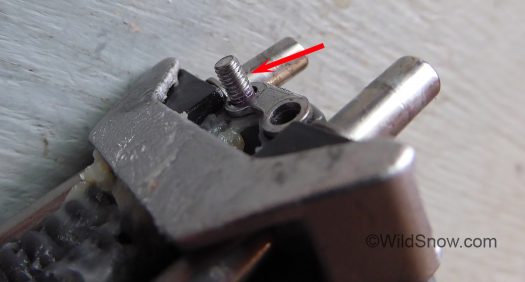
I simulated the insertion of a top plate screw to show how many threads are available. End up being about 9 threads — but not all 9 screw threads engage, probably about 7 due to a threadless pocket that’s part of the insertion path. These 3mm screws have a 0.5 mm thread pitch.
Ok, back to your kitten vids.
See our prior ION teardown here.
WildSnow.com publisher emeritus and founder Lou (Louis Dawson) has a 50+ years career in climbing, backcountry skiing and ski mountaineering. He was the first person in history to ski down all 54 Colorado 14,000-foot peaks, has authored numerous books about about backcountry skiing, and has skied from the summit of Denali in Alaska, North America’s highest mountain.

